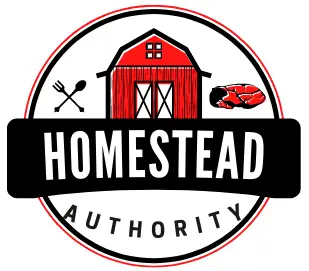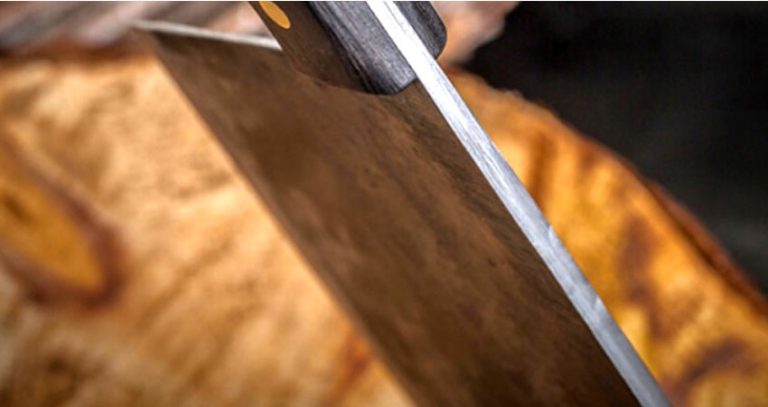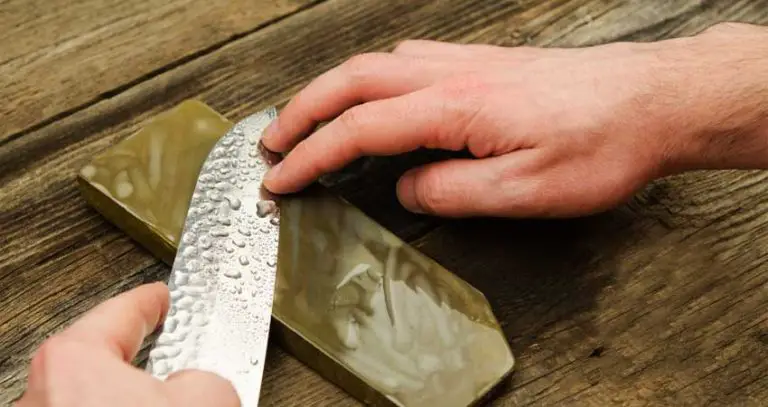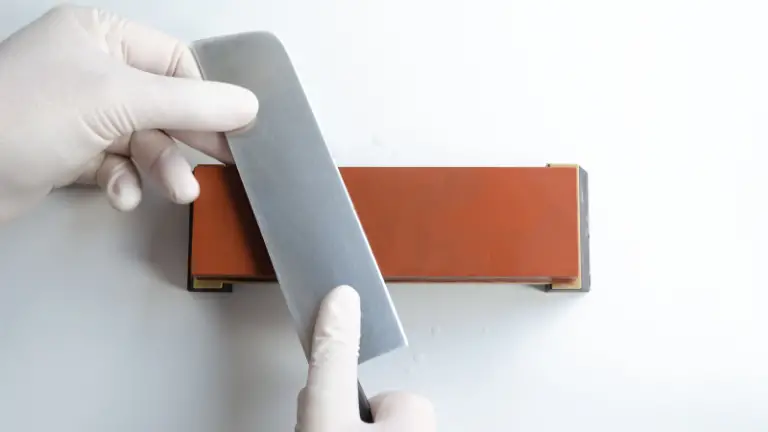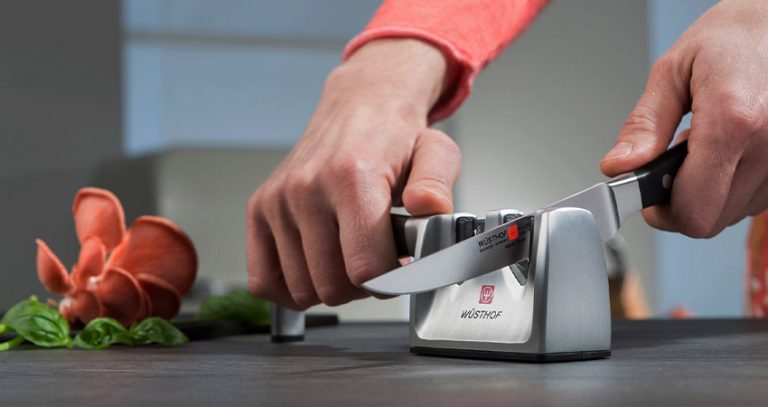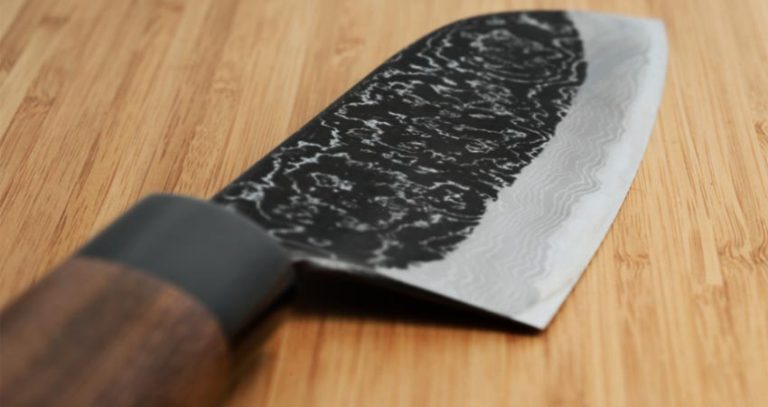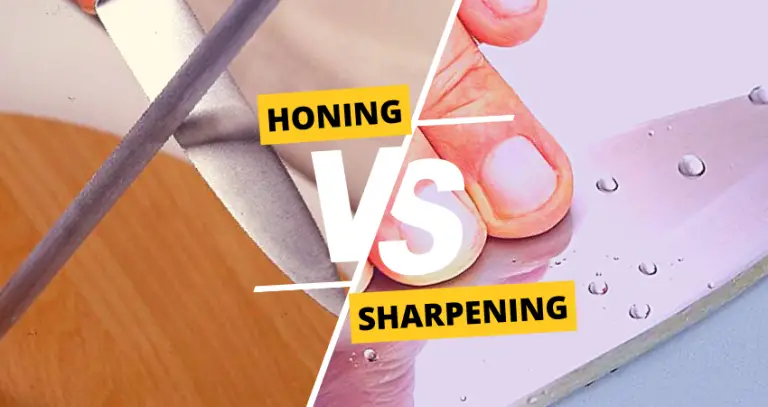How To Sharpen A Serrated Knife?
Whenever you’re prepping for a party or trying to entertain a crowd, an extra serrated blade can make slicing and dicing a breeze.
If you’ve tried to slice a tomato or a frozen pizza with a non-serrated knife, you know how difficult it can be to get the job done right.
And let’s be honest, after a long day, who wants to pull out the mandolin? Not to mention the risk of slicing your fingers in the process.
With a serrated blade, you can slice through anything. Not only will your prep time be cut in half, but you’ll also have much fewer accidents!
But over time, hours of use can dull even the most finely tuned knife, making cutting extremely difficult.
So, What Is A Serrated Knife?
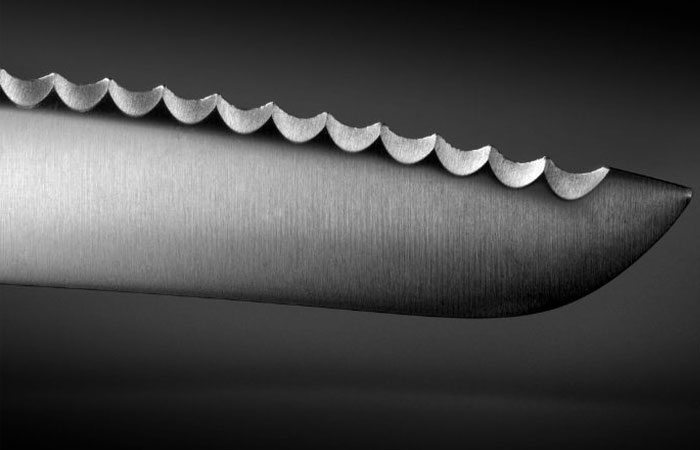
Serrated knives are one of the culinary world’s great marvels. They are shaped differently than your typical kitchen knife.
Also known as a bread knife or Serrata, they feature saw-like teeth (or serrations) that run along with it lengthwise on one side.
- The saw-like edge is its most unique characteristic and makes it so practical.
- The lack of space between each tooth creates more surface area and hooks, increasing cutting power.
- It’s great for slicing through soft materials like bread and tomatoes without crushing them.
- But it also works well on a denser items like chicken bones or fruit pits where other knives get stuck.
What Causes A Serrated Knife To Go Dull?
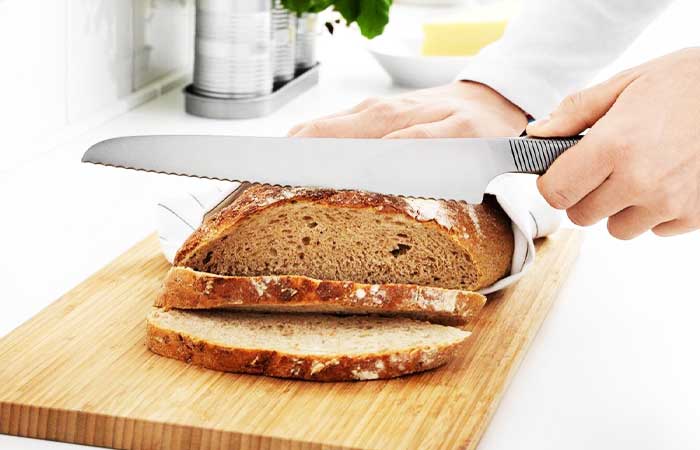
Blunt serrated knives are annoying and can make the simplest cutting tasks take much longer than necessary. The dull edge doesn’t cut as precisely, which means a greater risk of slipping and cutting yourself.
But what causes a serrated knife to go dull? Several factors can contribute to this and includes:
- Human mistake (wrong usage) or improper maintenance. For example, an unstable grip might cause additional damage on a knife-edge, especially if you put much pressure.
- Rough or clogged cutting boards make it hard to cut through food smoothly.
- Dishwasher chemicals that contain abrasive compounds which can erode serrated edges very quickly
What Do You Do When Your Serrated Knife Becomes Dull?
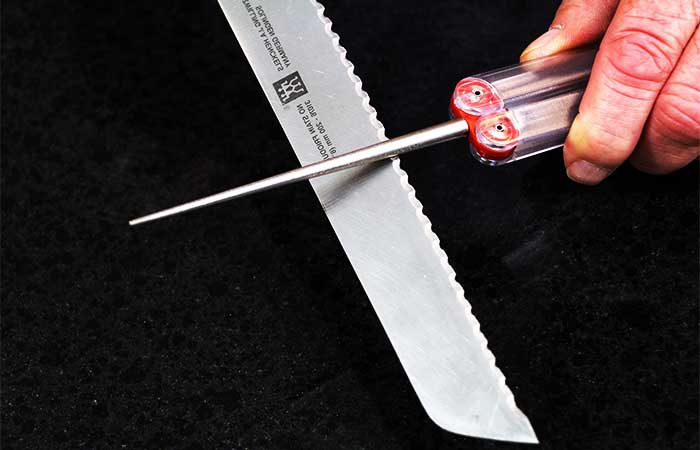
Sharpening a serrated knife requires special attention and care. It can prove terrifying, especially if you are new to it. But don’t worry, making that blade edge sharp again doesn’t have to be an arduous endeavor.
While they may seem similar to their straight-edge counterparts, serrated knives are quite different. So as you can probably tell, most of the knife sharpening methods you could use on your standard kitchen knife won’t work to the former.
There are several ways to sharpen your serrated knife; however, one of the most effective and time-efficient methods is using a sharpening rod.
For those unfamiliar with this tool, it can be described as a long and thin rod with the handle on one end and a tapered V-shaped sharpening steel on the other.
It is made so that one end slides over the serrations of the knife while the other is a standard blade edge. However, it is imperative to run the blade under cold water before using this method.
Steps For Sharpening A Serrated Knife
There are only four primary steps in learning how to sharpen a serrated knife: Preparation, Positioning, Stroking & Removing Burrs.
Step 1: Preparation

- Before you sharpen your serrated knife, thoroughly clean and dry it.
- A dirty or wet knife can damage your sharpening device, so wipe it down after each use.
- If you’re going to hone your serrated knife on a whetstone, prepare an area for work.
- Place an old towel on your countertop so that any loose pieces of steel don’t cut or damage the surface of your workspace while you’re sharpening.
- Position yourself in front of a sink in case any material falls off during sharpening; water and oil are likely culprits if they do.
Step 2: Positioning
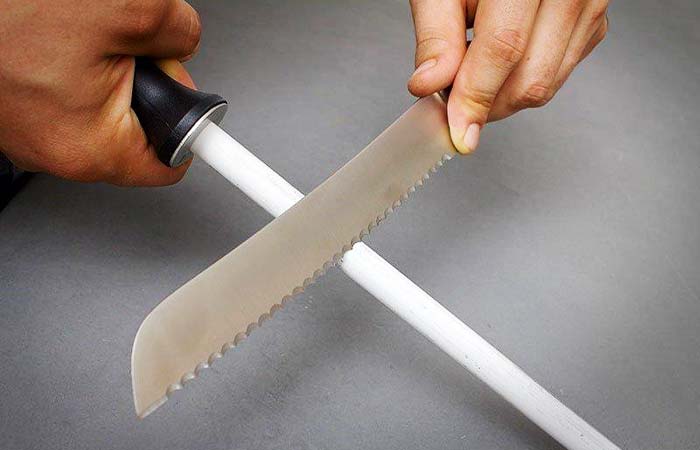
- Make sure your knife is positioned at an angle no less than 20 degrees from level. It ensures that you take material from both sides of your blade.
- The goal here is consistency, so if you sharpen on one side for too long, move it over and be sure to finish that side off too before returning it to its original position.
- You should also ensure you’re consistently angling your knife; usually, 20-degrees works well, but keep an eye on your work and don’t let that angle slip.
Step 3: Stroking
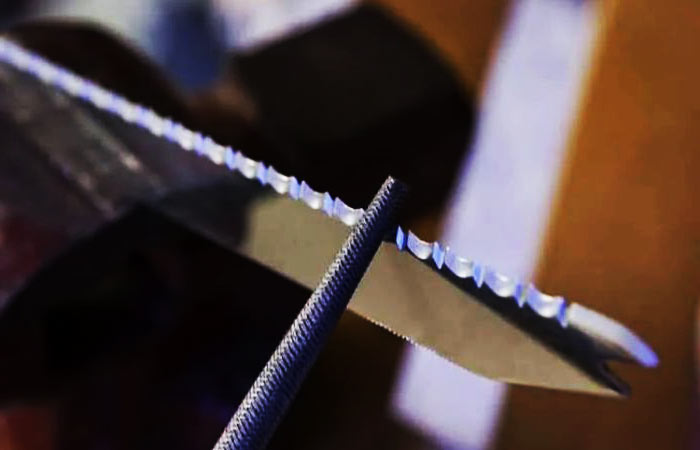
- When sharpening a serrated knife, start by stroking slowly down one side of your knife.
- Be sure to apply light pressure as you move along, especially if you’re sharpening at home, as it’s easy to press too hard and damage your knife accidentally.
- Once you reach your desired angle for sharpening on one side of your blade, use that same angle on both sides.
- To maintain an even edge, be sure that both strokes are consistent in length and pressure so that one side doesn’t get pushed back or damaged more than another.
- Remember that using too much pressure while sharpening can damage your blade and make it brittle.
Step 4: Removing Burrs
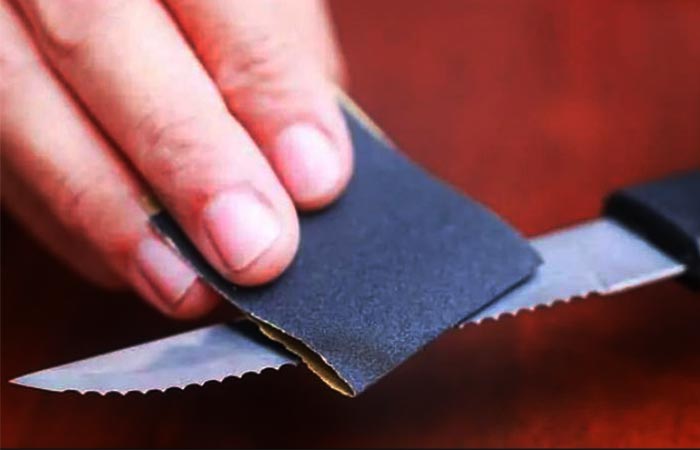
- Remove burrs by gently scraping them with an emery board or fine-grit wet/dry sandpaper.
- For added assurance, run your knife through warm water while sharpening. That way, if you accidentally create a burr, it will float away instead of attaching itself to your blade.
- Slice through an onion or other food item with minimal pressure to test its sharpness, such as slicing through paper.
So, the next time you use your serrated knife, you’ll be surprised by how smoothly and easily it slices through your food.
And what happens when that first bite comes cleanly and evenly off the edge? It might just be love at first cut!
FAQs
Can you sharpen serrated knives with an electric sharpener?
A serrated knife cannot be sharpened with a typical electric knife sharpener or a nontraditional one due to the shape of the blade. An up-market electric knife sharpener has a serrated slot, but it’s less precise.
How does a serrated knife professional sharpen his knife?
Using a round metal (ceramic or steel), use it to smooth one serration at a time. Blow slightly with moderate force to one side of the round honing rod, and it will quickly scrape off the bumps.
Just a few more swipes in the opposite direction will eliminate the debris, and the serration will be extremely sharp, suitable for cutting.
Can you sharpen a serrated knife on a stone?
A curved blade can easily be improved by making use of wet stones. It’s easy to maintain, but the process takes a long time.
Final Thoughts
It is easy to forget that all knives get dull over time. But, if you are lucky enough to have only ever owned serrated knives, then it can be hard for you to visualize how and why a smooth blade would become less effective as it loses its edge.
By paying attention to your serrated knife, its condition, and its needs, you can sharpen it in whatever way is necessary. You don’t need to be an expert sharpener to do this.
Just keep an eye on what’s going on with your tools and then take action when something seems amiss.
